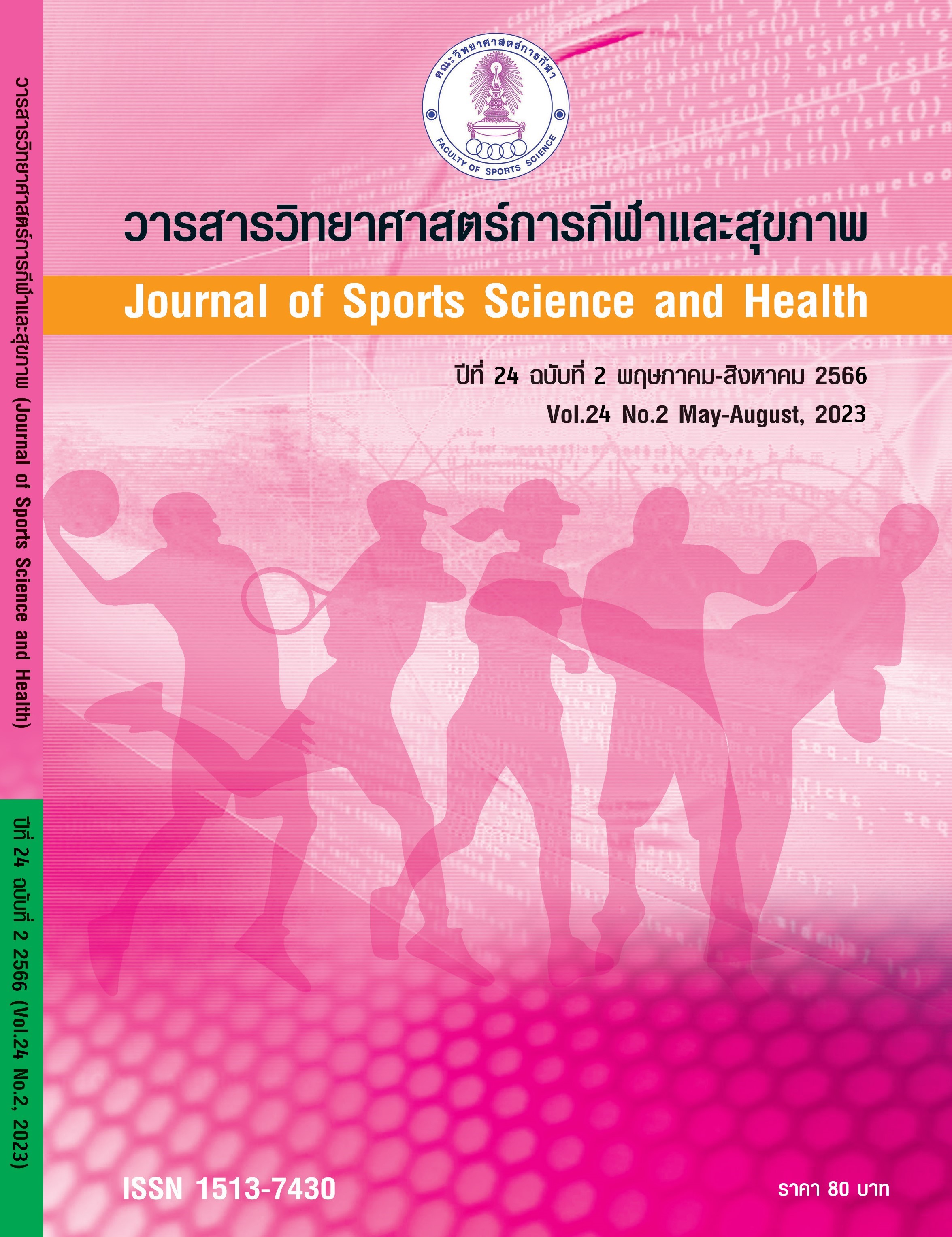THE EFFECTS OF EXERCISE BY USING COCONUT SHELL PULLEY ON RANGE OF MOTION OF SHOULDER JOINT IN THE ELDERLY
Main Article Content
Abstract
Purpose: The aim of this quasi-experimental research was to determine the effects of exercise by using coconut shell pulley on range of motion (ROM) of shoulder joint in the elderly.
Methods: Participants were the elderly (aged 60-75), purposively recruited from 2 communities in Mueang Nonthaburi District and randomly allocated to the experimental group (n=27), who attended the 12-week exercise by using coconut shell pulleys three times a week for 15 minutes. The control group (n=27) received no intervention. Range of motion of shoulder joints were collected before and after the experiment. Independent sample t-test and paired t-test were used to compare means between the two groups and change values within-group. A p-value of 0.05 was considered significant.
Result: The results showed improvements in ROM in shoulder flexion (163.89:127.78), extension (60.19:31.85), abduction (163.33:120.56), adduction (54.63:26.48), internal rotation (89.81:87.22), and external rotation (72.41:42.59) in the experimental group, which were significantly different from those of the control group (p<.05).
Conclusion: The utilization of a coconut shell hoist for exercise training resulted in an enhancement of shoulder joint flexibility in the elderly. This approach could serve as a substitute for conventional exercises in promoting the well-being of older individuals.
Article Details

This work is licensed under a Creative Commons Attribution-NonCommercial-NoDerivatives 4.0 International License.
References
ACSM (American College of Sports Medicine). (2006). Preparticipation Health Screening and Risk Stratification, in ACSM's Guidelines for Exercise Testing and Prescription. 8thed. Philadelphia Lippincott: Williams & Wilkins.
Bureau of Policy and Strategy, MOPH (Ministry of Public Health), Thailand. (2017). Strategy Plan of MOPH 2017-2021. (in Thai).
Chan, H., Pua, P.Y., & How, C.H. (2017). Physical therapy in the management of frozen shoulder. Singapore Medical Journal, 58(12), 685–689.
Chang, C. M., Chang, Y. C., Chang, H. Y., & Chou, L. W. (2012). An interactive game-based shoulder wheel system for rehabilitation. Patient preference and adherence, 6, 821–828.
Contractor, E. S., Agnihotri, D. S., Patel, R. M. (2016). Effect of Spencer Muscle Energy Technique on pain and functional disability in cases of adhesive capsulitis of shoulder joint. International Archives of Integrated Medicine, 3(8), 126-131.
Elisma. (2017). Neck Exercises-sitting. (Online). Retrieved December 2, 2019, from: https://physios4pain.co.za/2017/08/23/neck-exercises/.
Kowatanamongkon, K. (2019). Prevalence and Associated Factors of Frozen Shoulder
Among Patients at Family Practice Medicine Center in Phra Nakhon Si Ayutthaya Hospital. Journal of Preventive Medical Association of Thailand, 9(1), 59-72.
Leszczynska, A., Daniszewska, B., Pruszynska, M., & Przedborska, A.(2016). Effect of a health improvement programme on quality of life in elderly people after fall. Polish Annals of Medicine, 23(2), 129-134.
NESDC (Office of National Economics and Social Development Council). (2018). Social and QOL Database Sys. (Online). Retrieved December 10, 2019, from: https://www.nesdc.go.th/main.php?filename=index.
Noknoo, S., Boksawat, M., & Amah, M. (2018). The Effects of an Exercise Program on Pain and Range of Motion in Frozen Shoulder Patients. Princess of Naradhiwas University Journal, 10(1), 88-98.
Orthofixar. (2019). Shoulder Range of Motion. (Online). Retrieved November 25, 2020, from: https://orthofixar.com/special-test/shoulder-range-of-motion/.
Rungsopaskul, P., Krabounrat, J., & Ruangthat, R. (2014). A Comparison of the Effect of Rubber Chain for Increase Strength and Endurance Upon Range of Motion in Female Patient with Frozen Shoulder. Journal of Sports Science and Technology, 14(2), 129-141.
Strategy and Planning Division, MOPH (Ministry of Public Health). (2019). Statistical Thailand 2016. (in Thai)
Tantisiriwat, N. (2017). Shoulder pain or disorders commonly found in clinical practice. Chulalongkorn Medical Journal, 61(2), 205-221.
Taylor, N. F., Dodd, K. J., & Damiano, D. L. (2005). Progressive resistance exercise in physical therapy: a summary of systematic reviews. Physical therapy, 85(11), 1208-1223.
Turgut, E., Duzgun, I., & Baltaci, G. (2017). Effects of Scapular Stabilization Exercise Training on Scapular Kinematics, Disability, and Pain in Subacromial Impingement: A Randomized Controlled Trial. Archives of physical medicine and rehabilitation, 98(10), 1915–1923.
Veronese, N., Cereda, E., Stubbs, B., Solmi, M., Luchini, C., Manzato, E., Sergi, G., Manu, P., Harris, T., Fontana, L., Strandberg, T., Amieva, H., Dumurgier, J., Elbaz, A., Tzourio, C., Eicholzer, M., Rohrmann, S., Moretti, C., D'Ascenzo, F., Quadri, G., … Correll, C. U. (2017). Risk of cardiovascular disease morbidity and mortality in frail and pre-frail older adults: Results from a meta-analysis and exploratory meta-regression analysis. Ageing research reviews, 35, 63-73.
Wanmanee, S., & Prasartwuth, O. (2019). Effectiveness of Shoulder Stabilizing Exercises in Patients with Adhesive Capsulitis. Thai Journal of Physical Therapy, 41(3), 112-128.
Yan, Q. (2010). Translational bioinformatics and systems biology approaches for personalized medicine. Methods in molecular biology, 662, 167-178.


